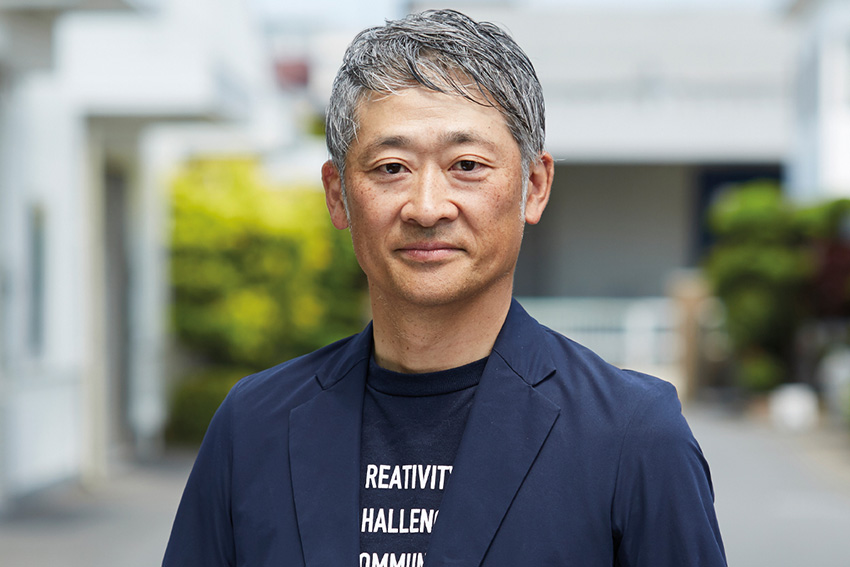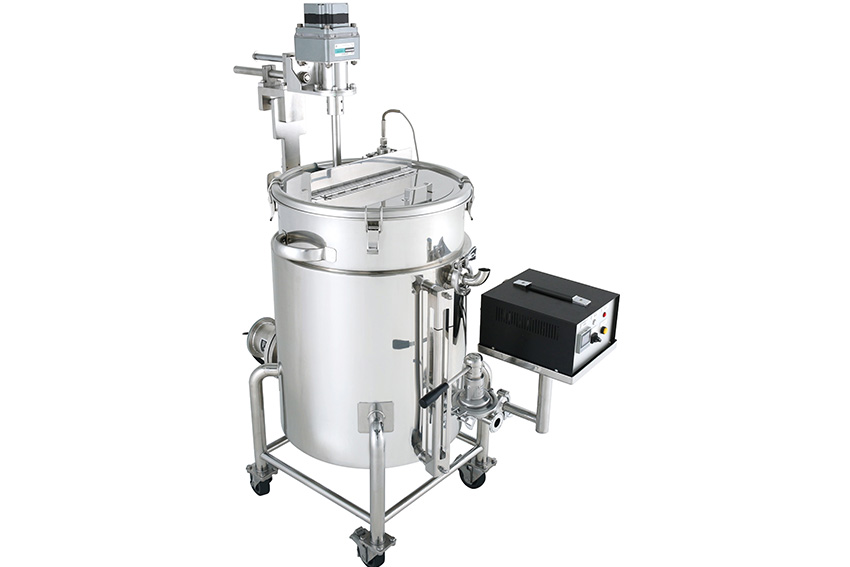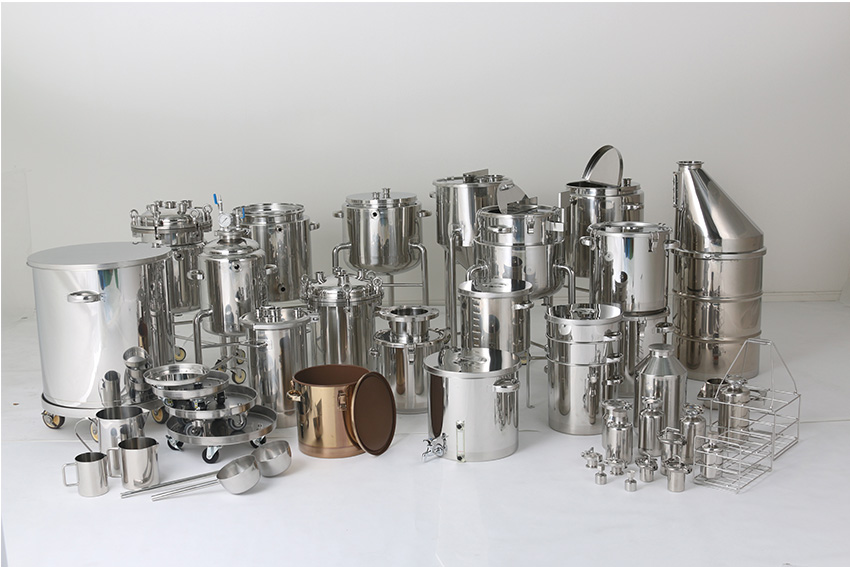Central to MONOVATE’s success is its commitment to customization and flexibility in catering to diverse industries. With a staggering 70%-80% of sales derived from custom-made products, the company thrives on continual innovation and adaptation to meet evolving customer needs.

Right now is a pivotal time for Japanese makers. Policies like the US Inflation Reduction Act are forcing corporations to diversify their supply chains for reliability and to reduce country risks, with nations such as China. Japan is known for its reliability, advanced technology, and a weak JPY, so for the time being Japan has never been a more cost-effective option. This means that Japanese firms have an opportunity to expand their existing global market shares. Do you agree with this sentiment, and in your opinion, what do you believe to be the advantages of Japanese companies in this current macroeconomic environment?
This is a difficult question. As the president of an SME company, I cannot represent the perspective of Japan as a whole. If I were to answer your question from my company’s point of view, what I could definitely say is that there has been an increase in the interest in the purchasing of our products. Our products are big and bulky like tanks and therefore require transportation costs. This meant that there weren’t that many overseas companies that are considered as economically viable to purchase our products, however, now, with the depreciation of the JPY we are receiving much more inquiries from overseas through our English-language website. It clearly shows that the depreciation of the JPY has made it easier for overseas companies to purchase products such as the ones we offer.
The biggest advantage of trading in Japan overseas is that you cannot go by land, you must go by sea. Since our products are big and bulky they aren’t known for being very efficient to transport, but now thanks to the depreciation of the JPY, the costs including the high transportation fees are still considered reasonable by international companies. At the same time, Japan used to import tank products from China, but with the economic situation being what it is, it is now cheaper to purchase domestically. This has had a positive impact on our business.
We saw that you customize a lot of your products, offering a flexible OEM service in which you deliver over 120,000 personalized products that can be purchased from a single unit all the way to 1,000 units at a time. This includes customizations such as electro-plating. Could you tell us about a particular customization project that you found challenging and what your firm did to overcome that challenge?
70%-80% of our sales come from custom-made products, and in fact, our major products are custom-made on a daily basis. Each day we are receiving roughly 10-20 enquiries from domestic companies from industries such as pharmaceuticals and chemicals. We are constantly improving and taking up new challenges to provide optimal solutions to our customers.
Each day we look at the requests we receive from customers and try to find commonalities before then trying to realize those common elements. It is from these elements that we further develop standardized products. It is easy to say “we can do everything,” but realizing that vision determines our quality. I think the model comes down to the repetition of taking ideas out of the needs of customers, standardizing those ideas, and then creating a new product that would spark customers to think of new applications. It enables a cycle of continual development and improvement.
Stainless steel is known for its corrosion resistance, high strength, ease of cleaning, and sterilizing properties. Out of all of the industries you cater to with your stainless steel products, which do you believe has the most potential for future growth?
Volume-wise, the pharmaceutical industry has been our main customer, however, looking at the size of the industry, maybe the growth potential is not that big whereas the chemical industry has a huge market size with plenty of room for growth.
The uniqueness of the Japanese chemical industry is the focus on creating new types of specialty chemicals and specialty materials. We ourselves specialize in the production of tanks and vessels for mid-sized research purposes. Our vessels are highly appreciated by companies that conduct these types of research activities. Japanese companies tend to prefer a high-mix-low-volume lot. Additionally, they are always looking to respond to a variety of requests whereas overseas we see more mass production with big-sized tanks.
Where our tanks come into play is in what are called pilot schemes, basically the initial phase of research where companies are using flasks and smaller containers to create mockups and prototypes. Living in Japan I’m sure you’ve experienced high-mix-low-volume in your daily lives. If you look in a convenience store, for example, there are so many different types of products available. If you go overseas it is more simple and standardized. This high-mix-low-volume concept is innate to Japan and I’m sure it will spread across the globe.

We saw in our research that you cater to the semiconductor sector as well. This is a sector that is evolving very fast worldwide, and interestingly here in Japan, you have TSMC establishing a plant in Kumamoto. Could you tell us about some of the services you provide to the semiconductor industry and do you foresee any new business opportunities with this renewed interest in semiconductor production domestically in Japan?
Our strengths aren’t in mass production, rather our tanks would be used in a lab or a research and development center; more of the smaller-sized containers are used in the development of new materials or technology. We are not looking to expand our scope within the semiconductor industry, rather we are looking to focus on specific niche applications.
Within the pharmaceutical industry, operational efficiency and regulatory compliance are key for product safety and efficacy. Your firm has a proven track record of working with 300 Japanese pharmaceutical companies such as big pharma and drug development companies. Can you tell us how your company has become such a close partner in the pharmaceutical industry?
To be honest, we have an advantage since we were an early comer to the market. There weren’t many competitors at the time when we started with pharmaceuticals and drug containers. Over time we were able to learn about the standards of quality and provide customers with the most optimal solution to meet their price range.
In order to provide products to the pharmaceutical industry there are very strict regulatory processes that need to be passed in order to maintain the drugs in a safe environment. Your company possesses a unique electrode polishing technology that eliminates microbial additions to metal surfaces. Can you tell us more about this specific technology and how it provides you with a unique advantage over your competition?
This technology is an ongoing technology and in fact, it is the complete opposite of metal plating. Pharmaceutical companies do not allow metal plating on the surface of products since once it is removed it is considered abnormal content. What we do is take the electrode and melt the surface so that the surface is clear. This technology is quite easy to apply to simple containers, however, for more sophisticated containers that require a tight seal, it is a much more complicated process.
Did you collaborate with another company to develop this technology or is it all in-house?
It was initially developed through a collaboration and now further developments are done in-house. It can be done by only around 5-6 companies in Japan and requires certain criteria for each lot. The need for this technology is only in the pharmaceutical and semiconductor industries. The standard is too high for the chemical and food industries.
Are you looking to target this specific coating to products from overseas regions? Are you looking to expand your OEM sales network channels?
As for pharmaceutical companies, we do provide our services to US-based firms, and for this particular market, we have an exclusive partnership there with a local company that handles local sales. Europe, distance-wise, is a little far and therefore difficult for a company like ours to penetrate. We would like to open new channels such as EV manufacturing and home appliances in China. To this end, we are not only looking to provide standardized products but also value-added products through customization.
I feel that COVID gave a strong advantage to Japanese firms, especially SMEs. With the introduction of Zoom and remote conferencing culture, Japanese companies can expand overseas like never before. Pre-COVID there were many Japanese people who didn’t know you could communicate effectively through the internet. Once a drawing is received discussions can be had with the customer on what kind of product is required and what customization they desire. Our business overseas has become easier and more accessible.

Your company has attended several exhibitions both domestically and internationally. In 1991 you started attending the Interphex New York exhibition and this year it will be held on the 16th of April. Are you looking to participate in future overseas exhibitions such as the Interphex New York, and if so, which products are you looking to showcase?
I hadn’t actually joined the company back in 1991. I do know however that the company found an agent at that event and we have had a business relationship ever since. Pre-COVID we attended two international exhibitions such as an exhibition in Germany. Domestically we attend roughly five events each year and each time we attend we look to showcase something new.
Could you showcase what kind of products you will be bringing to exhibitions in 2024?
Our products can accommodate liquids, powders, and slurries, and all industries that use these elements are our customers. Currently, our focus is on powdered forms and we are trying to develop a technology for transporting powder from point A to point B. Also, we are looking to create a mixing or stirring system that allows the mixing of hard-to-mix powders.
3D printing and metal printing are going to be mainstream technologies in the future, so with that in mind, we are providing products that can contain the ingredients for 3D printing and metal printing.
You’ve mentioned several times the idea of partnerships. Could you tell us, in terms of new partnerships, what kind of collaborators are you seeking? Are you looking just for domestic partners, or are you also looking to partner with international firms?
We do have a partnership with a German powder transportation solution company and we are looking to develop new products together.
Imagine that we come back and interview you again in 2027. What goals or dreams do you want to achieve by the time we come back for that new interview?
I’ve only been president of the company for a year now. The purpose of our company is to contribute to the innovation of our customers. Our customers are constantly evolving to develop new products and we play a key role in their development through our provision of optimal solutions.
0 COMMENTS